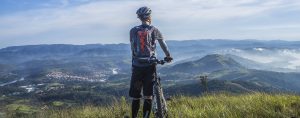Fisheries and aquaculture are very diverse, and the environmental issues highlighted here are not the result of all fisheries or fish farms, but the result of seafood produced in the UK market.
Fishing: Industrial Capture
Over-fishing
Technological improvements, increased demand and poor management mean that fish species can be used under very large fishing pressures, or they can be destroyed completely. Over-fished fish include popular species such as salmon and tuna, as well as long-lasting and slow-growing species like sharks or deep-sea fish.
Habitat Damage
Heavy or large fishing gears during fishing can damage the environment. Some fishing methods, such as bottom nets can affect seabed habitat. In areas with sensitive species, such as undersea corals, fishing gear can be prolonged for damage.
Prone Variety Capture
Wild animals such as albatross, sharks, dolphins, turtles, and dolphins are caught, caught or killed by fishing methods and forced to survive in vulnerable populations.
Industrial Fishing
Fish Food
To grow carnivores such as salmon and shrimp, you need to import a large amount of fish-meal. This demand for fish food puts pressure on the wild fish used to make it. Vegetable proteins such as beans can also be used in fish foods. In some parts of the world, soybeans and other terrestrial protein crops are produced in an environmentally harmful manner.
Pollution
Waste from fish food and excreta contaminates the water and seabed around the intensive fish farm, reducing the quality of water and sediment. Chemicals and pesticides (used to control parasites and diseases on certain farms) can also contaminate the area and affect surrounding marine life.
Escape Impacts Untamed Fish Inhabitants
Farmed fish such as Atlantic salmon can escape from a group of wild fish. Farmed fish are genetically unsuitable for the environment. As a result, all cross progeny have reduced chances of survival. Escape can put pressure on wildlife and compete with wild fish for food and resources.
Habitat Damage
Sensitive natural habitats become farms that can seriously affect the environment. For example, the establishment of tropical shrimp farms has historically caused severe damage to fragile coastal habitats such as mangroves. This damage leads to the loss of beneficial ecosystem functions such as natural coastal flood protection, farm habitat and water filtration.

